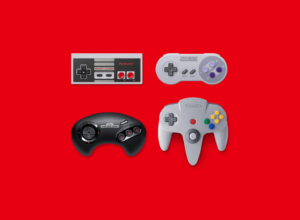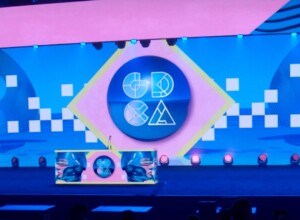Tonight we’re gonna party like it’s 1995. Or is it 2075? With Wipeout Pacer, it’s hard to say for sure.
“Ah ha ha ha ha ha ha ha ha, Wipeout!” Begins the seminal 1963 instrumental surf-rock song of the same name by the Surfaris. It’s funny. The exact same thought is running through my head as I play Pacer.
Ordinarily, it would be unfair to spend our time talking about a completely different game, but with Pacer and Wipeout, it’s inevitable. It’s another one of those spiritual successors to long-dormant franchise – like Cities Skylines or Two Point Hospital or Bomb Rush Cyberfunk – that is deliberately derivative, but done in a loving way, and to fill a painful gap left by a once-beloved series.
We haven’t seen a new Wipeout game since 2012’s Wipeout 2048, the last game developed by SCE Studio Liverpool, formerly Psygnosis, before its closure. 2017’s Wipeout Omega Collection is a remaster, which is nice and all, but it’s not a new entry in the series. And that’s where Pacer comes in, R8 Games Limited looking to fill the gap left by the console-shifting PlayStation classic.
Climbing into Pacer’s anti-gravity racing cockpit is instantly familiar to anyone who has played Wipeout. Of course it is. It’s precision-engineered to tug on your nostalgia nerve. The fact that’s a nostalgia for 1995’s neon-caked vision of futuristic motorsports is a little confusing, sure, but it’s nostalgic nevertheless.
Everything is present and correct. The cheek-rattling speed of it all. The floaty, slightly slidey, guided-missile handling. The air brakes, the big anchors that allow you to properly corner rather than just bank around bends. The stomach-in-the-throat undulations, that moment of weightlessness as you pitch over the top of a rollercoaster’s biggest dipper. The power-ups and speed boosts and slightly toothless weapons; fighting is fine, but going fast is better.
Everything is present and correct. The tedious, tryhard EDM soundtrack. The bizarre Running Man visual presentation. The fact that most of the game’s modes are somewhat indistinct, while longevity is eked from incremental upgrades to your craft and unlocking mirrored versions of the same tracks.
To be fair to Pacer’s longevity for a moment, the pre-release build I played was limited to a few tracks and modes. The game proper releases with a single-player campaign – often the best value in a racing game, futuristic or otherwise – and some interesting online developments, including a battle royale mode of sorts.
And, crucially, Pacer does play like an absolute dream. The visuals are crisp and the pace is eye-shrivellingly quick and – with the settings turned down a bit – I was still able to play Pacer at a blistering clip, even on a laptop with a (relatively) weedy mobile graphics card. It suggests that Pacer is rock solid and will play well on all systems and platforms. This has been core to the success and longevity of games like Rocket League, a game whose success Pacer would no doubt be happy to emulate.
We’ll find out very soon how well Pacer turned out – it launches on PC, PS4 and Xbox One on September 17 – but if you wanted a new version of Wipeout, and you don’t care about it having the IP? Prepare to be very pleased indeed.
People often complain that they don’t make them like they used to, but with Pacer, they definitely did. (And that’s for better and for worse.)
Follow Thumbsticks on Twitter and Facebook. Go on. Do it. You won’t be disappointed.






